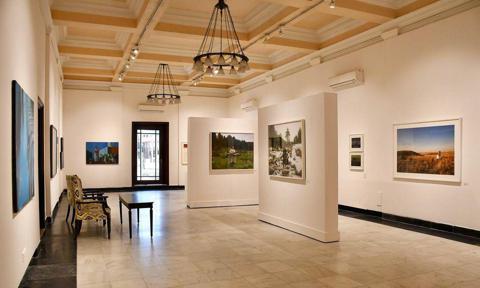
Art collectors and enthusiasts in and around Delhi can get a glimpse of what the ever-evolving Indian contemporary art space holds at the ongoing Delhi Contemporary Art Week (DCAW). And there’s much to explore and be excited about, if some of the most prominent art gallerists in the capital are to be believed.
“One of the most exciting things about the contemporary art scene in India currently is a recent upsurge of young and emerging artists experimenting with medium and material. The conventional media and new media, which include digital and kinetic forms, all find their way into the works of these promising artists,” says Bhavna Kakar, Founder-Director of Latitude 28 gallery, “Contemporary art has really evolved and Indian artists can hold on their own without resorting to gimmicks and experimenting with mediums just for the sake of it. So, painting or basic classic mediums like sculpture today can be very evolved and be appreciated in terms of concept. It’s partly a result of the shift in perspectives in the contemporary art scene, which is becoming more accommodating and accepting of young and local voices.”
Shefali Somani and Anahita Taneja, co-founders of the Shrine Empire, agree with Kakar’s assessment, adding that the young artists’ interpretation of these new materials is a way to sustain the art scene in the country.
“The Indian art landscape has never been more interesting. It is attaining a particular vantage and maturity and is sought by emerging exhibits. The impact of globalization in South Asia is inward, resulting in a distinct Indian voice. We have witnessed remarkable development and professionalism in recent years thanks to a new generation of forward-thinking curators and platforms with a worldwide reach,” says Rasika Kajaria, Director of Exhibit 320.
Renu Modi, director of Gallery Espace, is excited about the future of the Indian contemporary art scene because of the possibilities young and emerging artists from remote areas of the country hold, “There are scores of artists emerging from remote corners of the country, far away from the metropolitan cities, who are engaging with and making art thy touches on issues that affect all of us - the environment, gender and social inequalities - in a way that is rooted in the local, and yet speaks to the world with confidence.”
The DCAW is a collaborative project of seven contemporary art galleries in Delhi, including Shrine Empire, Latitude 28, Exhibit 320, Vadehra Art Gallery, Blueprint 12, Nature Morte, and Gallery Espace.

In its fifth edition, the DCAW has something for everyone, whether you’re a new entrant in the world of art or a seasoned collector, “DCAW brings together the most exciting contemporary work from South Asia. It’s a curated selection of the seven participating galleries. We have common areas that bring the show together, while we each also focus on a certain theme,” says Kakar. Parul Vadehra, Director of the Vadehra Art Gallery, adds, “Collectors who visit for the first time will witness a collaborative exhibition of seven galleries that exhibit a range of contemporary works, both in terms of pricing and mediums. There is something for everyone–from painting to sculpture to photography, as well as different price ranges, for people to select from.”
Shrine Empire’s Somani lists down the various walkthroughs by curators and gallerists of the works on display, adding, “In all there is a lot to take back from the week, learning events and a celebration around contemporary art.”
Events like DCAW are important, not just for celebrating the art space in the country, but to also bridge the gap between art collectors and emerging talent. Modi credits these events for making art accessible to the masses, “Events like DCAW help to create awareness about contemporary art among the citizens. They help make art accessible, and create newer audiences for art, and ultimately newer buyers and collectors.”
“I think the most important thing that we have accomplished is the synergistic engagement between artists, curators, and viewers,” claims Mandiraa Lambba, Founder of Blueprint 12. “Its focus on younger artists and their practice gives a chance for collectors to see something new and engage with gallerists and artists on a more personal level. It’s a smaller, more compact exhibition building a conversation and providing a focus, initiating growth and giving an impetus to South Asian artists,” says Taneja.
According to Kakar, the DCAW attempts to generate discourses around the changing ethos of contemporary art. “It has been conceptualised as the ultimate space for established and emerging collectors, and art enthusiasts who are eager to know more. It brings the world of contemporary art closer to the audience who may have been untapped by large fairs and provides visibility to a plethora of younger generation artists,” she says.
The DCAW concludes on 7th of September, so don’t waste any more time before heading over to Bikaner House to take a look at what the future of Indian contemporary art looks like.
- Quick links
- Delhi Contemporary Art Week
- art gallery
- Art






